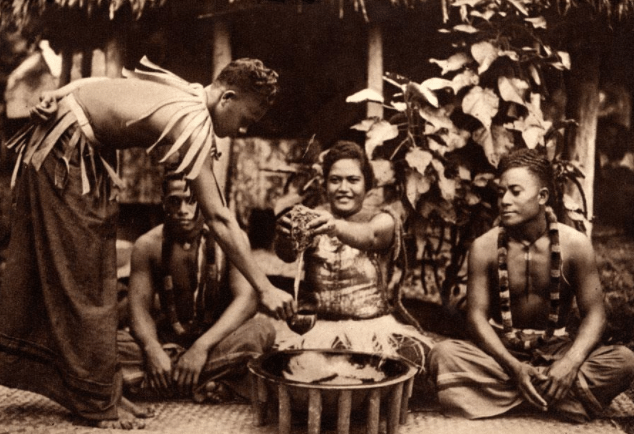Contact Us
A Look at the Fascinating Traditions in Fiji

A huge part of Fiji’s charm and appeal comes from the traditions celebrated across hundreds of years and over one hundred islands. The cultural customs in Fiji range from food culture to traditional dress. Throughout the archipelago, there are some rituals practiced by all Fijians, while others are specific to an island, region, or local community.
These traditions are important aspects of Fiji’s past but remain highly significant in today’s Fijian communities. Whereas other places have relegated their rituals as relics and merely symbolic, people in Fiji still approach their past traditions as relevant. It is far more than dressing up or putting on a show.
Here’s a list of several ceremonies and tradition in Fiji that have fascinated visitors over the years.
Hello and Greeting Your Friends
The traditional word of greeting in Fiji, “Bula!” will quickly become part of your repertoire while on a vacation in Fiji. Its extensive list of meanings is hard to catalog because locals and visitors use the word to express emotion, as well as a certain definition. At times, it can seem as if “bula” is the right response to any question or comment in Fiji. Luckily, English is also widely known on the islands, and if you need clarification of further explanation, you need only ask.
Another greeting custom that interests visitors is the interaction between women. Fijian men and women will have formal, straightforward interactions on the street, typically a verbal exchange. However, women introduce and interact very differently. Hugging and light kisses to the cheek are common, and when a Fijian woman greets another woman whom she esteems and admires it is customary to touch her nose to the woman’s cheek. Sometimes this exchange can last for several seconds; a touching and intimate sign of respect.
Food Customs and Feasting
Every Fijian meal is filled with custom and past traditions. For example, the very style of shared, communal eating is a tie running through Fiji’s history. The passed plates and family atmosphere is part of the communal harmony that’s essential in Fiji’s local villages. As well, most families still follow hierarchy traditions around the evening meal. These include requiring all members of the family to attend the meal, and not starting to eat without the male head of household present.
As well, celebrations in Fiji are constructed around food. If there is a special occasion or important event, the entire community will turn out for a traditional feast. Many of these substantial feasts are prepared in the lovo. An underground oven utilized by Fijians throughout their history. Various foods, from fish to chicken and taro, are wrapped in banana leaves and tossed into the lovo. These little packages of food will cook for two hours or more, and then become a favorite at the evening feast.
Another traditional aspect of Fijian feasts is an offering. Traditionally, these offerings were made of raw foods, such as pigs, oxen, or fish, but today’s versions can range from these substantial offerings to canned foods or part of the cooked meal. Of course, these offerings are intertwined with Fiji’s traditional religious beliefs and are made to please the different gods recognized by local communities and ancestors.
One Tradition Left in the Past
There is one tradition of Fiji that is relegated to the past, and it’s probably the most infamous aspect of the country’s culture. The government formally apologized for the cannibalistic traditions of Fiji’s past back in 2003, but the practice and its importance to Fiji’s history continue to intrigue, and sometimes intimidate, visitors. What’s important to know is Fijians no longer practice cannibalism, but it was once allowed on several different islands.
In Fiji, the practice of consuming human flesh and certain body parts date back more than 2,500 years. Then, and until the last known act of cannibalism in Fiji in 1860, the act wasn’t one of offering or ceremony but related to power. The Fijians believed that by eating parts of your vanquished enemies you could internalize their knowledge, even their memories. Thus, cannibalism was believed to make the individual smarter and stronger, and be a final act of control, and frequently revenge, over an enemy.
A Traditional Kava Ceremony
Kava, also called yaqona or grog on certain islands, is a traditional beverage extracted from an indigenous plant in the South Pacific. It’s the national beverage of Fiji and highly respected among most local people. The very term kava has its origins in the word “bitter,” and visitors are often surprised by the lingering, tart taste of kava. The tingling that accompanies a sip of the tart drink is also unexpected. The temporary sensation is similar to Novocain at the dentist office and is indicative of kava’s other physical effect – relaxation.
It’s a social drink that is closely akin to alcohol in terms of sharing and social setting, however, Fijians traditionally consumed kava in small quantities. It wasn’t meant to accompany a meal, the way certain cultures drink beer or wine, but is enjoyed as part of a larger ceremony.
Everyone participating in the kava ceremony sits in a circle on the floor, as the kava is prepared in a tanoa bowl. Then, to the rhythm of traditional clapping and chanting, the kava is passed from person to person. This ceremony provides a deep connection to Fijian’s ancestral past.
Experiencing Fijian Traditions
As a guest, the opportunity to participate in a Fijian celebration, ceremony, or experience a traditional meal on Taveuni is special. It provides insight into Fiji’s past and creates a unique bond with the country, as it exists today. Raiwasa Private Resort offers several opportunities to experience a kava ceremony, traditional meke performance, or lovo feast. We’re proud to showcase the best aspects of Fiji culture and hope each guest leaves with memories of these beautiful cultural traditions.
